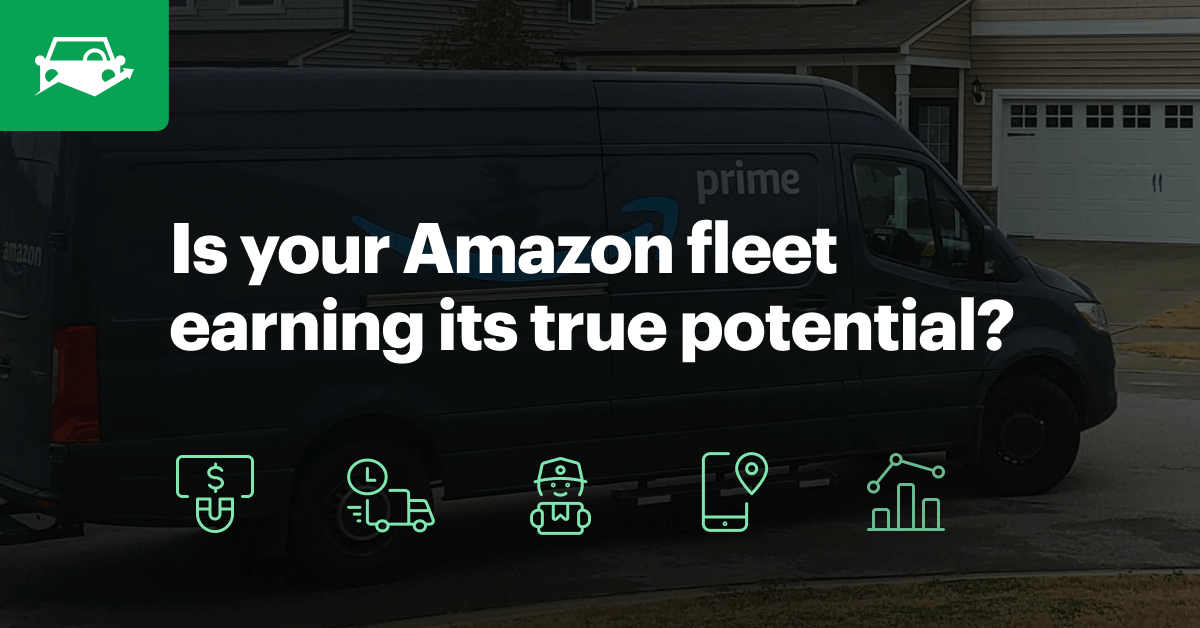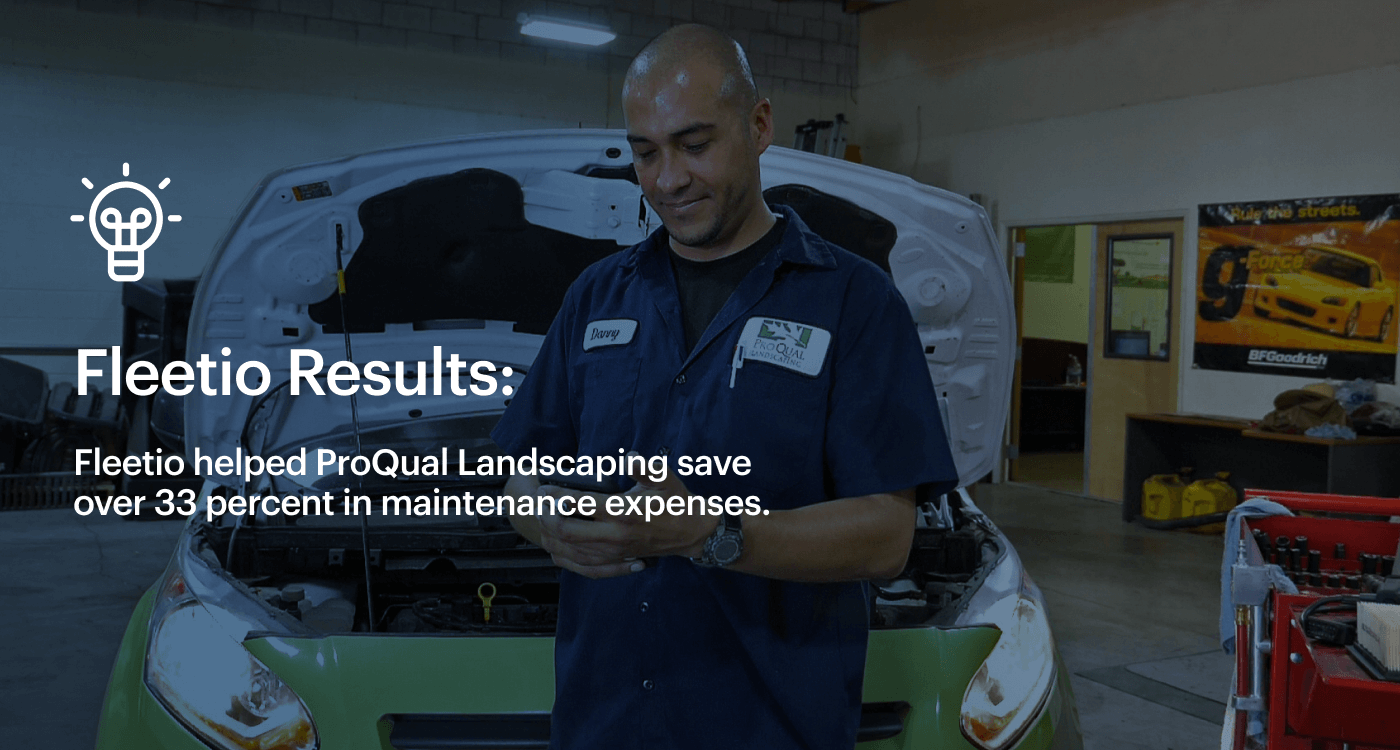Operating an Amazon delivery service provider (DSP) fleet presents a budding opportunity to flex one’s entrepreneur muscle while providing a much-desired service to the public. But how can these delivery service providers maintain a profitable operation?

The Amazon Delivery Service Partner Opportunity
Amazon delivery service providers are an arm of Amazon logistics (AMZL) but function independently. Thanks to Amazon delivery service providers, consumers can click a few buttons and their packages will be delivered the next day.
These delivery logistics companies can be started by anyone, regardless of experience level. Those interested in starting an Amazon delivery fleet should check out Amazon’s logistics opportunities.
If you already operate an Amazon delivery fleet, chances are Amazon has provided you with some assistance to manage your vehicles. But how can you maximize profits and limit costly out-of-pocket expenses?
Here are five ways amazon delivery fleets can maximize profits and efficiencies with fleet management software.
1. Implement Electronic Vehicle Inspections
Having visibility into the status of your vehicles might be the most important element of managing an Amazon delivery fleet. Implementing daily vehicle inspections across your fleet not only ensures regulatory compliance with the Department of Transportation, but it also provides insight into your vehicles.
Electronic daily vehicle inspection reports (eDVIR) are completed via a mobile application and transmit directly to a fleet management software dashboard. Managers receive updates in real time and can take immediate action to address an issue.
Notifications can be configured to deliver via email and accessed on a mobile device, allowing you can troubleshoot from anywhere. This insight and immediate transfer of information can be a tremendous solution to help Amazon delivery service providers pinpoint vehicle preventive maintenance needs before issues compound.
2. Control Your Entire Maintenance Process Including Expenses
A fleet’s maintenance workflow might start with vehicle inspection results, the manufacturer’s recommendations or odometer readings. But what is the best approach for the next steps in preventive maintenance?
Delivery vehicles are constantly on the road, and trying to oversee maintenance for all of them can be problematic. Modern fleet management software offers maintenance management solutions to automate processes and handle expenses for your entire Amazon delivery fleet.
One of those solutions is configurable preventive maintenance schedules. Fleet managers can configure notifications when service is due soon and take the necessary action to address the vehicle’s maintenance needs and avoid downtime.
Developing electronic work orders is a function of fleet management software which is much faster than paper and eliminates tedious data entry. This process not only boosts efficiencies but connects you directly with your maintenance vendors and helps ensure accuracy.
You can track the progress of all maintenance and view each line item to best track your maintenance history, understand your costs and prevent out of pocket expenses.

3. Monitor Fuel Spend and Cost Per Mile
Fuel is another substantial fleet operating expense that should be closely monitored. Amazon fuel allotment is based on expected route mileage and you need a system to track usage.
Fleet fuel management software integrates directly with fuel cards, so there’s no need to input entries into spreadsheets again (which should make any fleet manager smile). Fuel transactions aggregate for all vehicles so you have a holistic view to review purchases and potential discrepancies.
Total fuel costs are automatically calculated to not only provide accurate fuel economy metrics but each vehicle’s cost per mile. These valuable metrics will help you make critical decisions to keep costs down and maximize profitability.
4. Track Drivers and Vehicles
Location, location, location. It’s not only a real estate agent’s suggestion but something you must be aware of in regards to your fleet vehicles. Each Amazon delivery service provider has dozens of locations to serve daily.
As a fleet manager, you must be aware of vehicle locations to ensure deliveries are fulfilled within the expected time slot. Telematics devices from providers like Geotab integrate with fleet management software like Fleeio, providing a centralized and secure database to track your entire fleet. Real-time location data helps you hold drivers accountable and meet your customer’s needs.
Odometer readings are extremely important if you’re following the vehicle manufacturer’s maintenance schedule recommendations. Preventive maintenance schedules can be configured based on mileage intervals.
Telematics devices gather vehicle odometer readings and can transmit the results to your fleet management dashboard. You can set notifications to initiate vehicle maintenance once certain mileage levels approach. This not only ensures your vehicle’s are receiving optimal maintenance, but it can also prevent more costly issues from arising.
5. Utilize Configurable Reports
Amazon delivery fleets need to share details of its operation with Amazon Logistics. Trying to use spreadsheets for all of the various data points of each vehicle is an incredibly inefficient process.
Collecting useful data is one thing, but the goal is to synthesize the results, share them with proper stakeholders and make impactful decisions based on trends. This no longer has to be a painstaking process with endless complex spreadsheets.
Fleet reporting is a powerful feature of fleet management software that makes it easy to visualize your metrics. Conveniently break down your fuel and maintenance expenses by line item and determine the true total cost for each of your vehicles. Configure reports to pinpoint the areas of highest interest and schedule to email them for your preferred time interval.
See why Amazon delivery service providers are leveraging the power of Fleetio. Start your free trial or request a demo today!




